Understanding the Universal Geneve Baby Nina and All Compax 1950 Reissues
Universal Geneve used to be one of the most respected watchmakers in the world, having made the world’s first three-register chronograph wristwatch in 1937. Their sporty “Nina Rindt” chronographs of the 1960s remain particularly popular. Universal Geneve, now owned by Breitling, released some one-off upscale Tribute to “The Nina” Compax models in 2025 that signal a promising revival. But there are also some 1990s Compax reissues from Universal Geneve’s “dark times” under Stelux ownership that are often dismissed by collectors. Here’s our guide to the Universal Geneve “Baby Nina” and the whole family of “Compax 1950” watches from the 1990s.
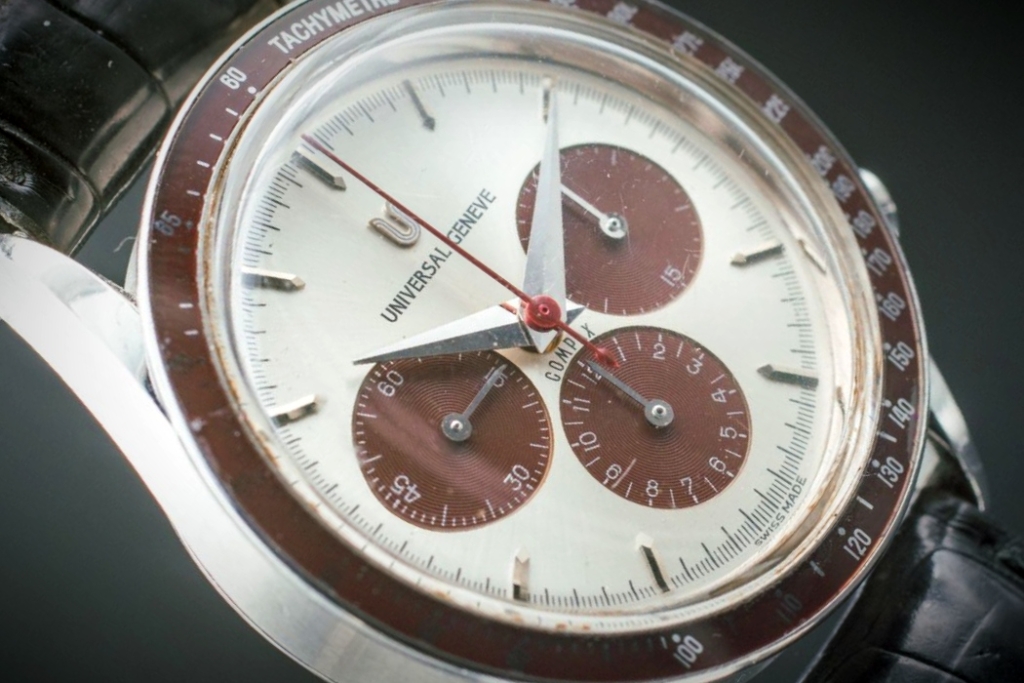
What is a Nina Rindt vs. a Baby Nina Chronograph?
“Nina Rindt” is the collector nickname for vintage 36mm Universal Geneve Compax models from the 1960s with panda dials and tachymeter bezel inserts.
The Legendary “Nina Rindt”

The name stems from the fact that Mrs. Rindt, a fashion icon herself, was often seeing wearing one trackside while watching her husband, Formula One driver Jochen Rindt, until his tragic death in a crash in 1970. Prices of vintage Nina Rindt chronographs have been steadily climbing, with nice examples easily fetching over $30,000. Their distinctive fat black hands were a key part of the look, although the 1990s reissue we’re talking about today doesn’t have those.
Origins of the Universal Geneve Baby Nina of the 1990s
After succumbing to the pressures of the “quartz crisis” like many Swiss watch brands, Universal Geneve was acquired by Hong Kong-based retail conglomerate Stelux International in 1989. Under Stelux ownership, a series of Compax reissues–officially called “Compax 1950”–debuted in 1990. These “Baby Nina” a.k.a. “Nina Rindt Jr.” models are surprisingly faithful to the look of the original Nina Rindt chronographs.
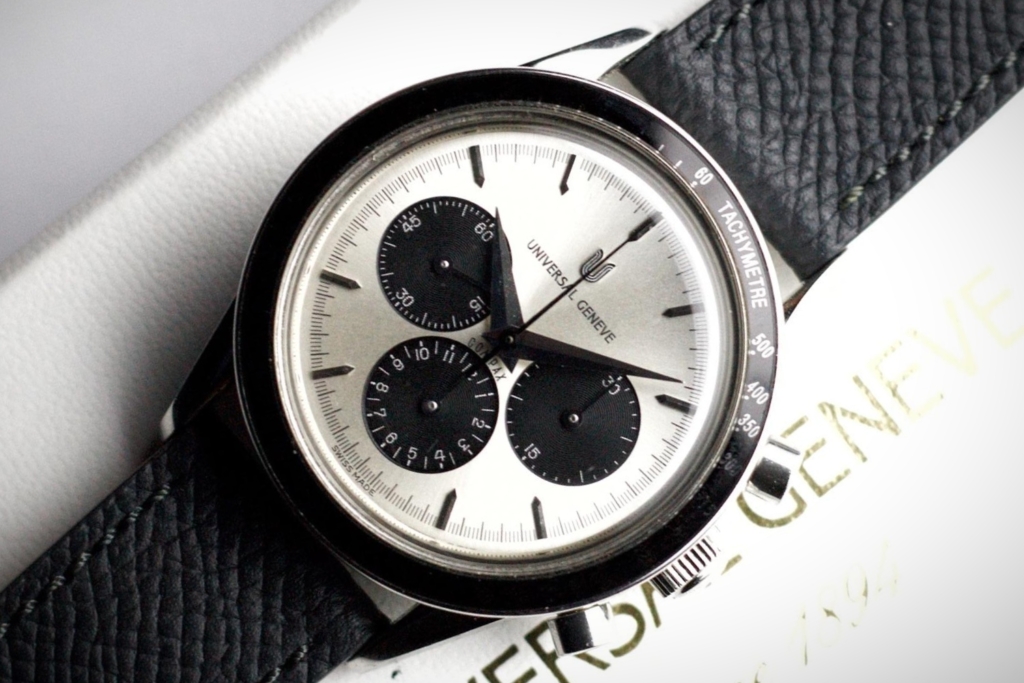
As I mentioned, the hands are slightly different–almost all Compax 1950 models have jumbo dauphine hands–and the subdials aren’t recessed like they are on the “real” Ninas. But Baby Ninas are powered by the very respectable cam-actuated manual-wind Lemania 1873 movement, though it’s not as beloved as the column-wheel Valjoux 72 caliber in the original Ninas. Screwdown crowns help provide 100m of water resistance.
The definitive Universal Geneve “Baby Nina” models (884.475, 884.485, and 884.495) are stainless steel models with a width of 37mm and panda dials, along with vintage-like acrylic tachymeter bezel inserts that match the color of their subdials. While “panda dials” are most classically white with black subdials, in this case they’re really silver with either black, burgundy, or blue subdials. There are also two-tone Baby Ninas with gold coin-edge bezel assemblies, crowns and pushers. Two-tone Baby Ninas were never offered in burgundy (which Universal Geneve calls “claret”).
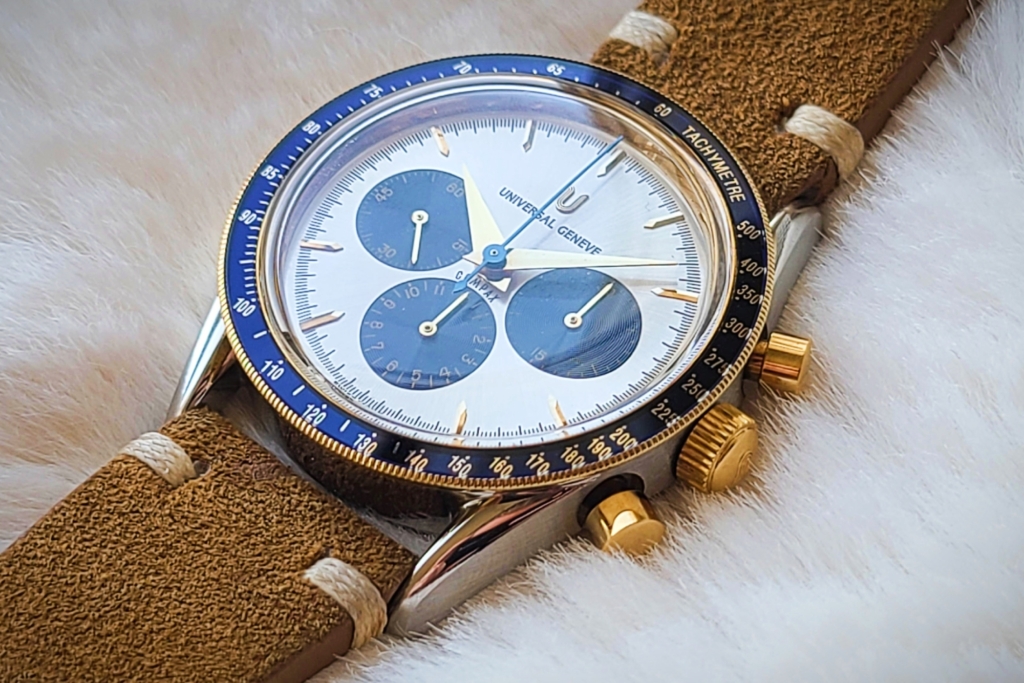
Non-Nina Compax 1950 Models
There are some material and color variations of the 1990s reissues, like ones with smooth bezels and/or monochromatic dials, that aren’t generally called “Baby Ninas.” This 284.485, for example, has a relatively rare monochromatic black dial and a gold tachymeter insert:
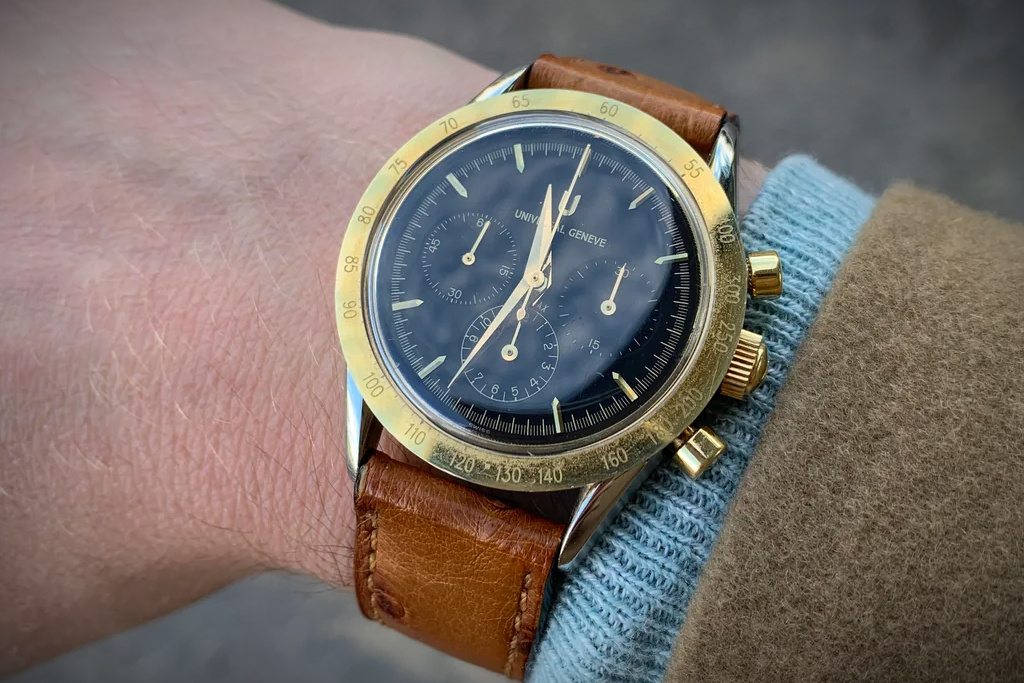
The rare 284.460 is like the watch shown above, but with a pulsometer scale (for measuring heart rate) on the bezel insert instead of tachymeter, and it also has the coin-edge bezel.
There’s also the 884.420, one of only two references (along with 884.425, which has a tachymeter scale printed on its steel bezel) with lumed stick hands and sapphire crystals instead of big unlumed dauphine hands and acrylic crystals. That’s what former Universal Geneve ambassador and current MotoGP hall-of-famer Max Biaggi wore in a magazine ad. Because of its simple smooth bezel, its diameter is only 36mm.

One of the least Nina-like Compax 1950 dial options is what I call a “tuxedo reverse panda dial” with applied sans-serif Roman numerals. Note that some 884.480 variants have a coin-edge bezel which gives them the same diameter as the 37mm Baby Ninas, but this one does not:
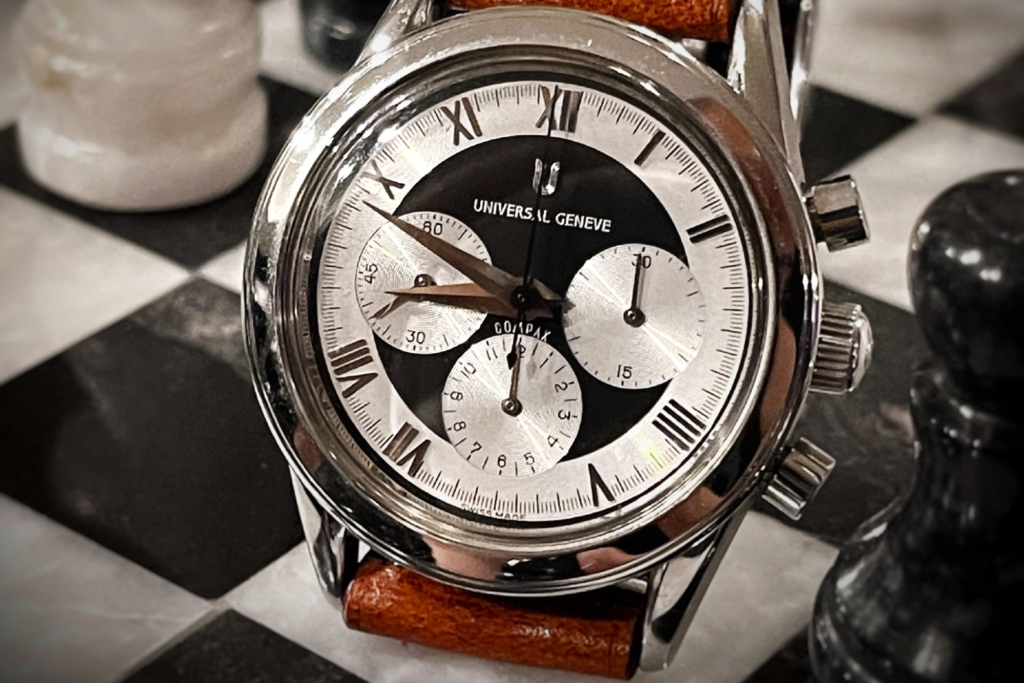
Solid gold models do exist in either 18k yellow or rose gold, but they’re rare, and only come with smooth gold bezels.
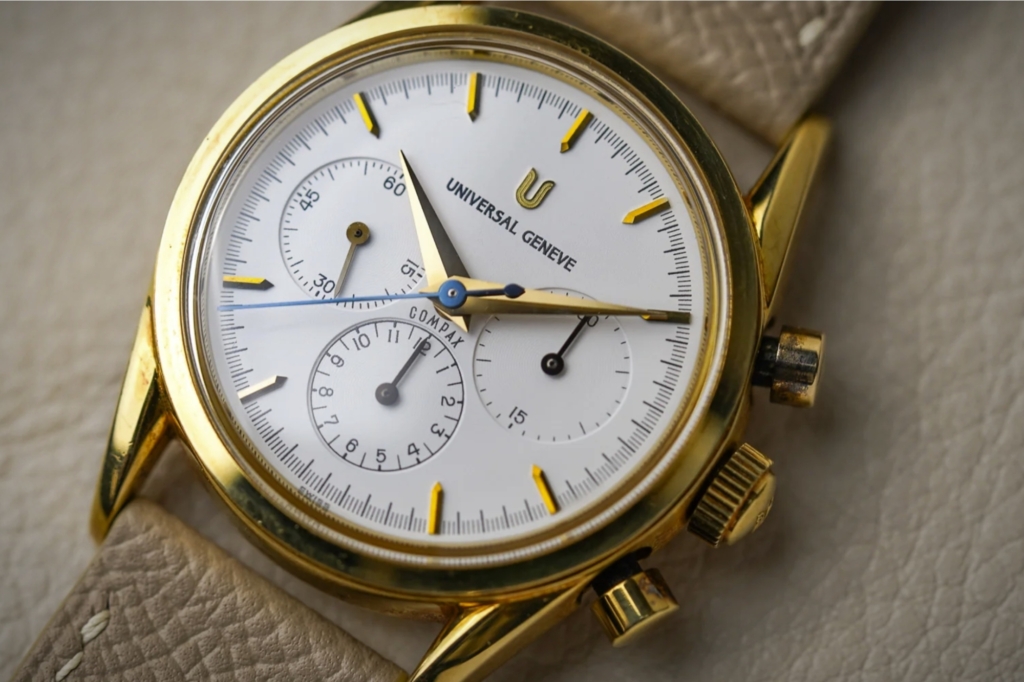
But before I break down all the variants of Compax 1950 models, I’ll go over their specs, then I’ll talk about where they stand in the collector zeitgeist.
Universal Geneve Baby Nina/Compax 1950 Specs
| Feature | Specification |
|---|---|
| Model Name | Compax 1950 |
| Reference Numbers | 884.475, 884.485, 884.495, 884.480, 884.420, 884.425, 284.460, 284.465, 284.475, 284.495, 284.445, 384.445, 184.440, 484.440 |
| Case Material | Steel; Steel/Yellow Gold; Steel/Rose Gold; Yellow Gold; Rose Gold |
| Case Diameter | 37mm with tachymeter and/or coin-edge bezel 36mm plain bezel |
| Case Thickness | 13mm |
| Lug-to-Lug | 45mm |
| Movement Caliber | UG 84 (manual-wind, Lemania 1873 base, 6 beats per second) |
| Power Reserve | ~46 hours |
| Crystal | 884.420, 884.425: Sapphire All others: Acrylic (Plexiglass) |
| Water Resistance | 100m |
| Bracelet/Strap | Crocodile leather strap with deployant or tang buckle, three-link brushed bracelet, or five-link polished bracelet (gold second-and-fourth link optional) |
| Debut Year | 1990 |
| Market Value (2025) | $3,000 (Steel, smooth bezel) $4,500 (Two-tone) $6,500 (Steel, acrylic tachymeter bezel) $9,000 (Gold, smooth bezel) |
Desirability/Price
Today you can expect to pay over $6,000 for a nice Universal Geneve Baby Nina from the 1990s, especially if its bezel insert/subdials are blue or burgundy. Compax 1950 models with plain steel bezels like the “Max Biaggi” trade closer to $3,000 while most two-tone versions (like the example from Patina Nationale shown below) are somewhere in between those two figures. Most examples for sale are in Asia, where Stelux-era UG seemed to focus their efforts. All of these prices are basically double what you would have paid not long ago.
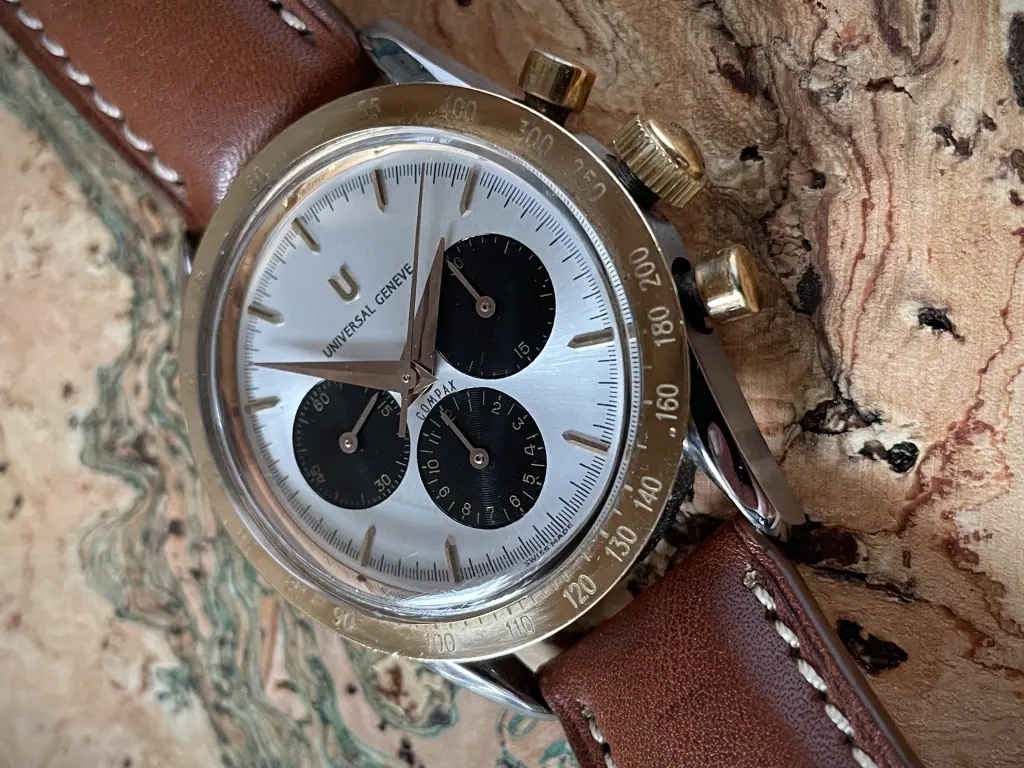
Enthusiast sentiment towards these 1990s Universal Geneve Compax reissues has historically been dismissive if not outright hostile. “Market value is about 10% of the Nina Rindt it tries to copy. Don’t be fooled,” warned Watchuseek user Watchfred in 2016. And, candidly, Luxury Bazaar unloaded a few Baby Ninas for $3,000 each in 2023 and our photographers didn’t even bother to take pictures of them. That’s just the reality of where the Compax 1950 stood at the time.
But enthusiasts are starting to realize that even if it doesn’t have 100% of the magic of the original Nina Rindt, the Universal Geneve Baby Nina is still a cool, well-made watch. It wouldn’t be hyperbolic to compare these 1990s Universal Geneve Compax reissues to the Omega Speedmaster. In addition to using the same Lemania 1873 movement that Omega Speedmaster Professionals used at the time, Universal Geneve Compax models of the 1990s “were often packed in styrofoam boxes which were embossed with the Omega logo. Most probably UG and Omega used the same case producer” as well, according to Girard Nijenbrinks of Fratello.
More on the Omega Speedmaster:

Universal Geneve Baby Nina/Compax 1950 Reference Numbers
The first, last, and second-to-last digits of a Compax 1950’s reference number (which is always engraved on the caseback in x84.4xx format) can tell you much about its configuration:
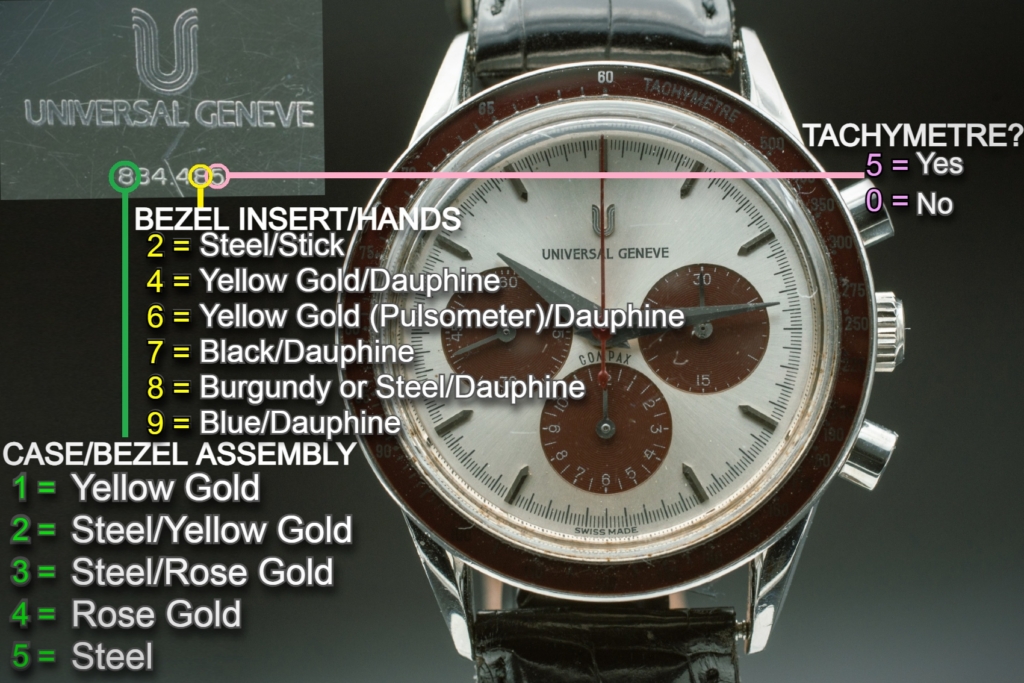
Here’s a concise breakdown of every Compax 1950 reference that Universal Geneve made in the 1990s:
| Reference | Case Material | Dial Color | Bezel / Notes |
|---|---|---|---|
| 884.475 | Stainless steel | Silver/black | Black acrylic tachymeter insert |
| 884.485 | Stainless steel | Silver/burgundy | Burgundy acrylic tachymeter insert |
| 884.495 | Stainless steel | Silver/blue | Blue acrylic tachymeter insert |
| 884.480 | Stainless steel | Silver, Silver/black, silver/blue, or tuxedo reverse panda | Stainless steel polished bezel, rarely coin-edge |
| 884.420 | Stainless steel | Black, black with Arabics, silver, or silver/champagne with Arabic numerals | Stainless steel polished bezel, lumed stick hands |
| 884.425 | Stainless steel | Black, Black/yellow with Arabics, silver, or silver/champagne with Arabics | Stainless steel tachymeter bezel, lumed stick hands |
| 284.460 | Steel & yellow gold | Silver | Yellow gold coin-edge bezel with gold pulsometer insert (rare) |
| 284.465 284.475 | Steel & yellow gold | Silver/black | Yellow gold coin-edge bezel with black acrylic tachymeter insert |
| 284.495 | Steel & yellow gold | Silver/blue | Yellow gold coin-edge bezel with blue acrylic tachymeter insert |
| 284.445 | Steel & yellow gold | Black, white, or silver/blue | Yellow gold tachymeter bezel and pushers |
| 384.445 | Steel & rose gold | White or silver/black (limited to 150 pcs.) | Rose gold tachymeter bezel and pushers |
| 184.440 | 18k yellow gold | Black, white, or cream with Romans and textured center | Plain yellow gold polished bezel |
| 484.440 | 18k rose gold | Black or white | Plain rose gold polished bezel |

Bracelet/Strap
The Universal Geneve Compax 1950 line, including the Baby Nina, most often came on a crocodile leather strap, with either a deployant (folding) clasp or a classic tang (pin) buckle. But Rolex Oyster-like three-link steel bracelets and five-link bracelets (with two shiny little rice-like rows of links between three bigger links) were both available.
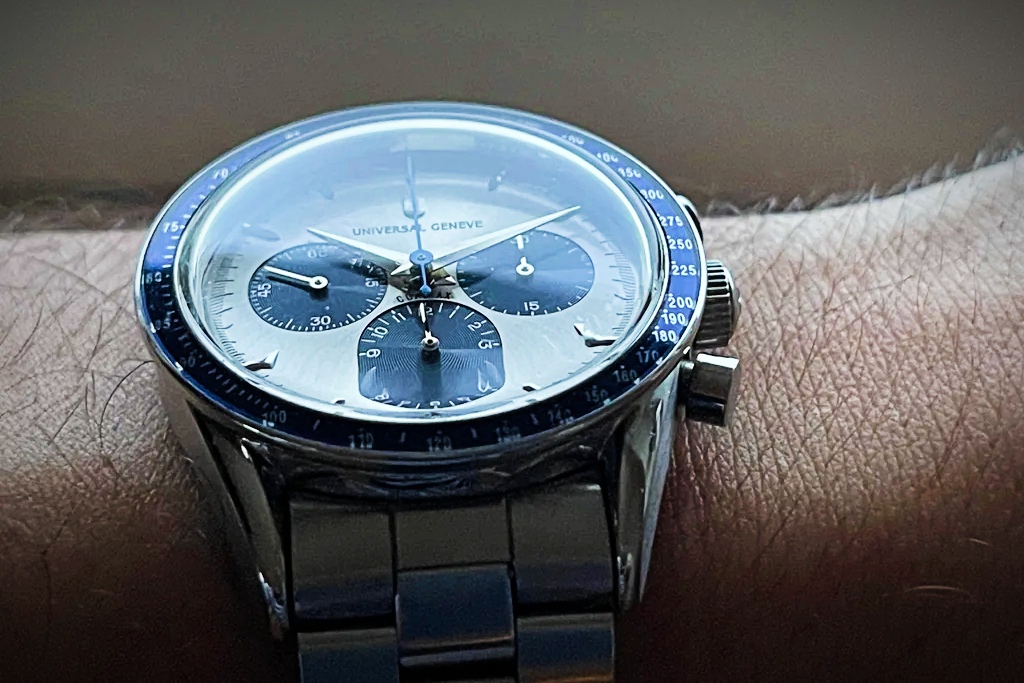
Two-tone models also had a five-link bracelet option, and on those, the small polished links are gold. Surprisingly, some steel models were offered with two-tone bracelets as well, and on those models, the hands and hour markers should be yellow gold.
Final Thoughts on the Compax 1950
While the Baby Nina and the rest of the Compax 1950 line are respectable watches, there wasn’t much else good to come from Universal Geneve during Stelux ownership. Watches like the Universal Geneve “Lobster” didn’t get much love, for instance. By the early 2000s the Compax 1950 had been effectively superceded by the lamer Okeanos family, and then the brand basically hibernated for a while.

By the late 2010’s, enthusiasts were distraught by Stelux’s apparent decades-long semi-abandonment of the storied brand. So much so, in fact, that Alpha Hands LLC (one of the two leading sources of vintage UG reference info along with UniversalGeneve.info) attempted to launch a Kickstarter campaign to buy the brand from Stelux. But that was before Breitling bought Universal Geneve in 2023. Time will tell if their 2025 Nina Rindt tributes will lead to a production model anytime soon.
Note that not all Universal Geneve chronographs of the 1990s are considered Compax 1950 models. There are ETA/Valjoux 7750-based ones with 6-9-12 subdial layouts, some quartz wannabe-TAG-Heuer models, and even a 39mm rattrapante chronograph (ref. 188.100), for instance. But to me, the Compax 1950 line is the clear highlight of Stelux-era UG offerings. And while nobody is saying the Baby Nina is as cool as a real Nina, it’s pretty cool nonetheless.


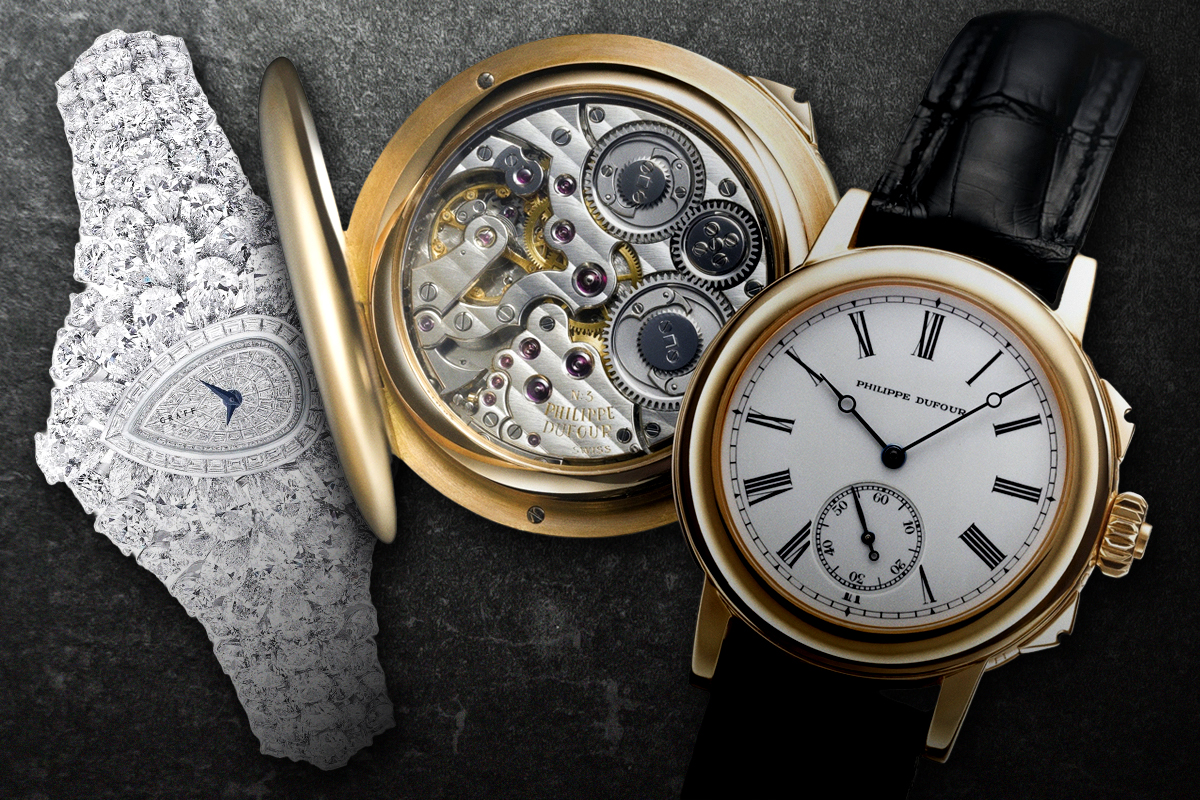



Leave a Reply